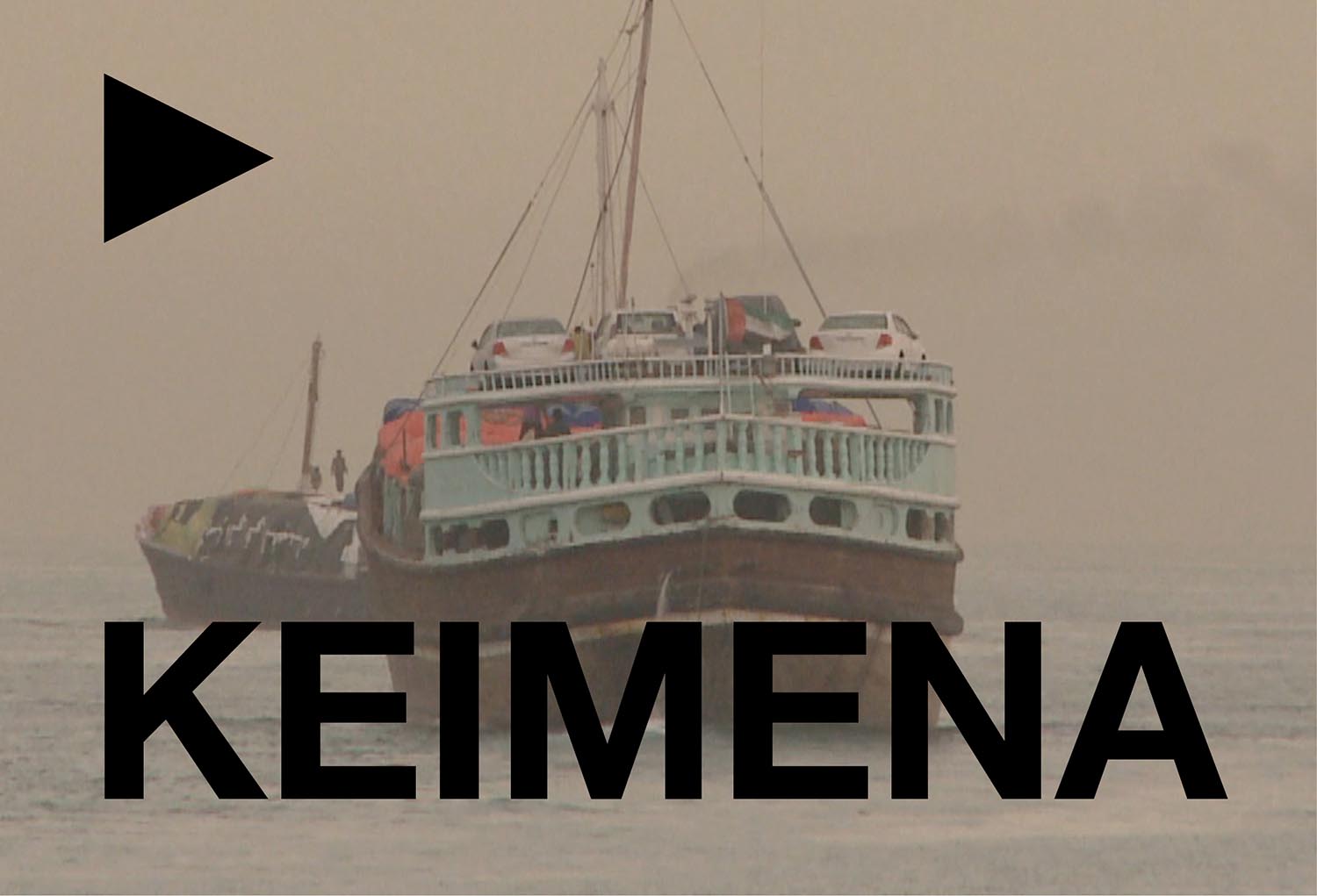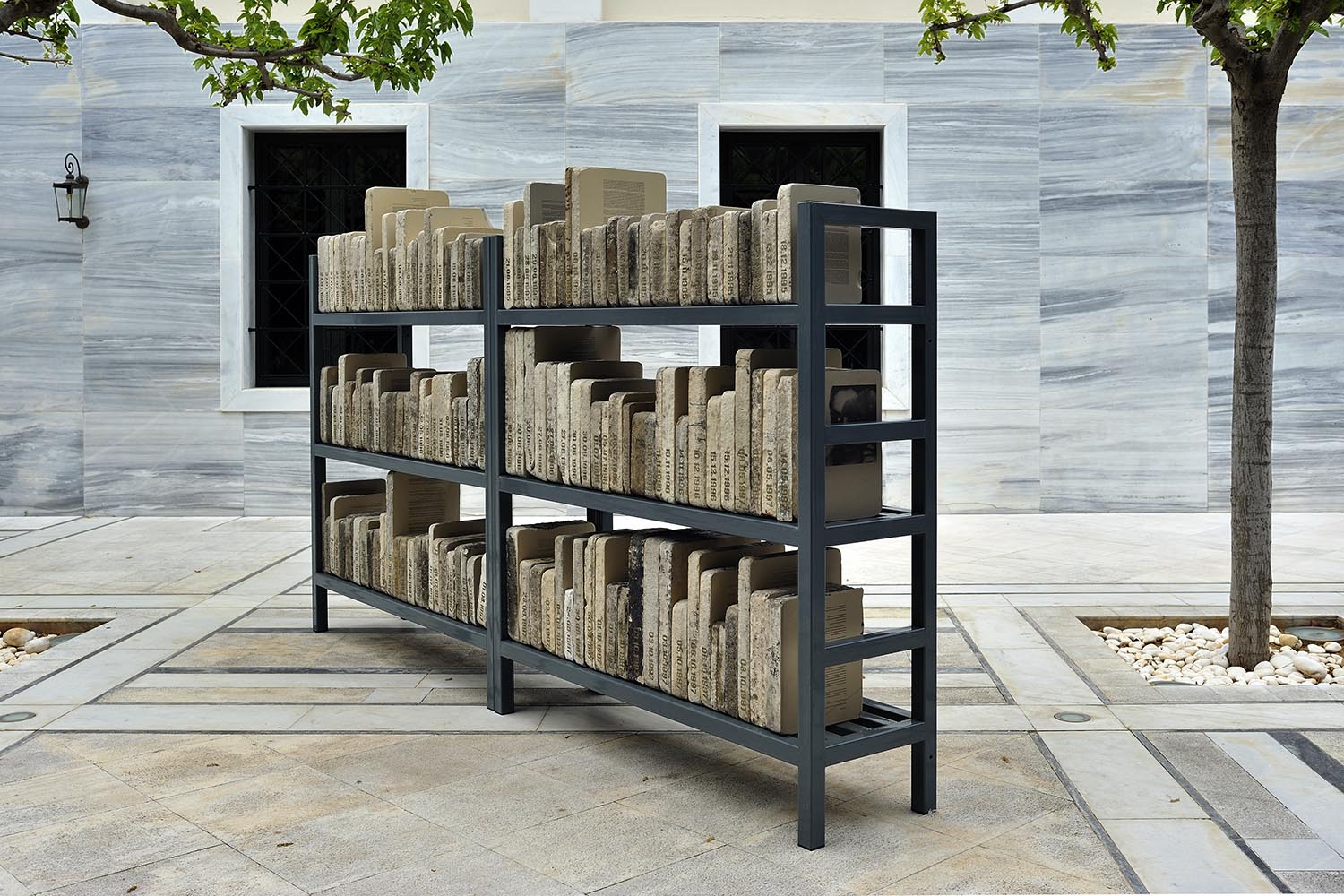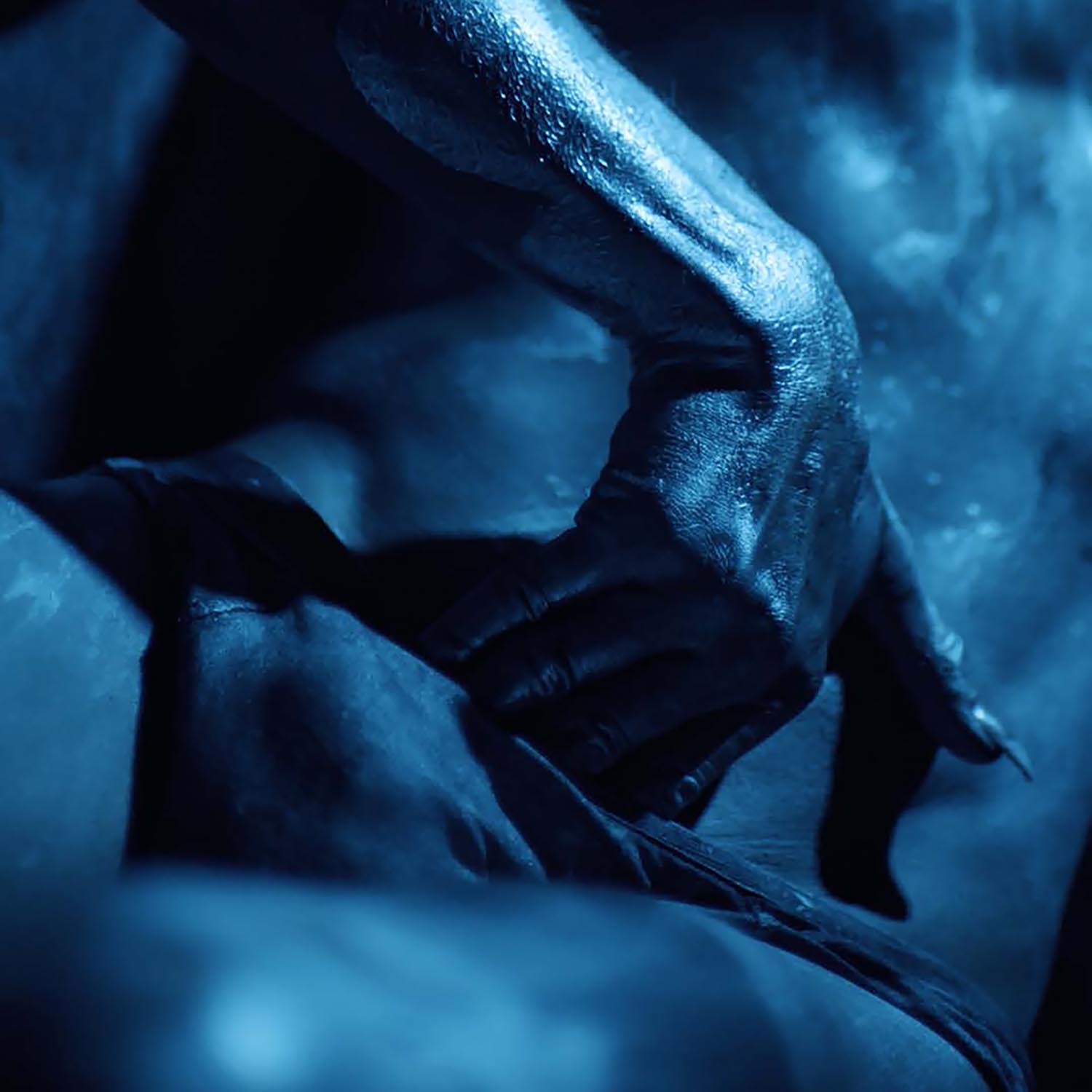A city associated with economic troubles and reverence for ancient culture, Athens isn’t known as an epicenter for contemporary art. And yet, during the opening of Documenta 14, the local art scene grabbed the opportunity to make an impression.
Many visitors gravitated toward the NEON Foundation’s site-specific exhibition by British artist Michael Landy. After relocating to Athens for several months, Landy took over an entire floor of the empty, slightly crumbling Diplarios School in the city center. His project takes advantage of an abundance of empty classroom space, now filled with found images, drawings and texts submitted by the Athenian public. Using these materials for reference, Landy copies the images and transforms them into larger-scale blue-and-white paintings, whose color scheme clearly refers to typically Greek aesthetics.
The artist positions himself not as the primary author, but instead as a vehicle, or platform, for the local population to tell their own stories. During the exhibition, Landy could be found continually adding new works to the exhibition and chatting with visitors. Engagement with the local population is central to the exhibition concept; as a result, the old school is reactivated as a place of learning, cultural exchange and contemporary political discourse.
Contemporary Greek politics were strongly felt at local gallery exhibitions as well, many of which outshined the lackluster official Documenta programming. In the Kolonaki area, Kalfayan Galleries presented “Perished Sun,” a three-artist show featuring works by Yiannis Papadopoulos, Panos Tsagaris and Kostis Velonis. All three explore various mathematical and solar systems through painting, sculpture and photography. “Perished Sun” references the ancient Greek view of the solar eclipse as an evil omen, an ominous sign that foreshadows conflict and suffering. Papadopoulos’s representation of a historic sixth-century map by Cosmas Indicopleustes offers an alternative view of the world order, vastly different from contemporary reality. Tsagaris’s multilayered silkscreens and gold-filled abstractions of the front page of the New York Times reference the often-problematic media coverage of the Greek crisis. Velonis’s architectural sculptures expose empty space and evoke this city’s complicated past.
Down the road, Maria Kriara has a solo show at CAN Gallery, titled “The Pawnshop.” Fascinated by ephemera from the past, Kriara collects images and phrases and reworks them for viewer, presenting old artifacts in a new context. Old photographs, signs and clippings are stripped of their historical or sentimental connotations. Their meaning is abstracted, their origin cloaked in mystery. In some ways like Michael Landy, Kriara sees herself not so much as the creator of new work and ideas, but a vehicle for history. She doesn’t make art as much as she repackages and abstracts the past, making us aware of the tenuousness of our own understanding of history.
Spread around the city center, Bernier/ Eliades Gallery, The Breeder, Qbox and Gagosian’s local outpost presented similarly well-curated, focused exhibitions. Several local museums presented strong contemporary programming in time for the crowds, juxtaposing the work of contemporary artists alongside ancient Greek treasures. Two of the most notable institutional shows included the DESTE Prize anniversary exhibition at the Museum of Cycladic Art, showcasing works by nine recipients of the prestigious Greek art prize over the years, and “Paratoxic Paradoxes” at the Benaki Museum, featuring an international roster of (mostly female) video artists exploring post-internet aesthetics and new mediums.
Athens’s art scene has slowly grown as foreign artists, drawn to the pleasant weather and low cost of living, have set up studios here. The city’s abundance of abandoned buildings is ripe for takeover by creatives looking for inexpensive exhibition space. The Greek capital’s position as a port for refugees and a symbol of Europe’s economic tensions offer plenty of material for artists looking for stimulation. The city’s evolving art scene certainly has much to offer. Let’s hope that continues.





